Introduction –
Amsterdam Airport Schiphol is the Netherlands’ largest international airport and one of the world’s busiest, with six runways, one of which is devoted to general aviation. The surrounding city is world-famous and dubbed the “Venice of the North” because of its numerous canals.
I’ve been to Amsterdam several times, and it’s certainly my most visited city outside of the United Kingdom, but the appeal of landing at Schiphol was strong. It is by far the largest airport in Europe that is not cost-prohibitive for general aviation, as opposed to Berlin, Frankfurt, and London Gatwick, where you will most certainly spend the better part of a thousand pounds. More about the costs later in this article.
This was another destination plagued by cancellations, the first in November 2021 due to the COVID-19 curfew and subsequent protests and riots, the second in April 2022 due to a technical issue with the aircraft, and the third in November 2023 due to cumulonimbus in the forecast during a planned night arrival. This was particularly frustrating given how frequently I’d flown to nearby Rotterdam and other destinations.
The Plan –
The plan was now for January 2024, which may also be at risk due to icing, but fortunately, above-average temperatures were predicted, making an airways IFR trip possible despite the colder conditions. Ryan, who had never travelled to Amsterdam but had travelled to Spain in 2022, was my passenger on this journey.
We intended to stay in Amsterdam for one or two nights and visit the tourist sights but also have Schiphol recorded in my logbook, as one of the busiest airports in the world. This was not without difficulty because January is winter in Europe. The main risks to this attempt include windstorms and icing, as well as possible delays because of a severely constricted SLOT airport. Since the airport is close to the North Sea and at a low elevation, it is susceptible to strong gusts and poor visibility. Nevertheless, since the flight was short, preparing for the weather was probably not too difficult.
Airport Choices –
The choice of airport for IFR flights is determined by several criteria, such as reasonable handling fees, accessibility (both customs and police), and a recently implemented restriction: The airport does not allow aircraft categorised as Category A. Airports like Barcelona El Prat prohibit this, and in some cases, even though they are not allowed to, they do so informally and charge you outrageous costs. For the kind of aircraft we operate, Jet A1 availability is not a problem at the majority of significant international airports.
There are a few airports/aerodromes that you can use to enter and exit the Schengen Area if you are staying in Amsterdam.
EHAM Schiphol –
The primary international airport that serves Amsterdam. Situated 5.6 miles southwest of Amsterdam, it is the busiest airport in Europe concerning aircraft movements and the third busiest airport worldwide for international passenger traffic. It features a separate GA terminal that is perfect for IFR arrivals or departures for an international flight, in addition to several runways with different configurations for arrivals and departures.
From Schiphol, rail service to Amsterdam Centraal and the rest of the Netherlands is convenient. From Schiphol, Canadaweg, take the 191/181 bus to the GA terminal or take a taxi to get to the central terminal area.
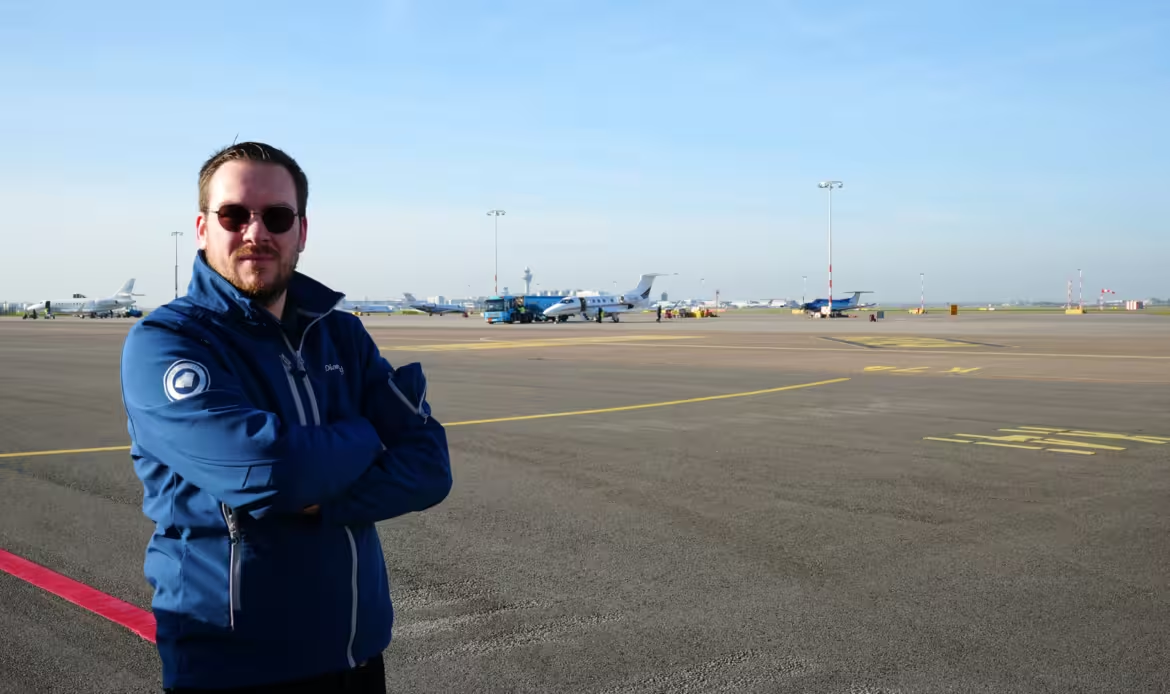
EHRD Rotterdam –
Rotterdam The third busiest airport in the country, The Hague Airport serves the second-biggest city in the Netherlands. The airport features a Vliegclub that can handle international customs and immigration as well as general aviation aircraft weighing up to 2000 kg. According to the Netherlands’ AIP, for security purposes, all general aviation aircraft arriving at Rotterdam The Hague Airport must undergo approved handling.
It’s perfect for an international flight’s IFR arrival or departure. The only drawback is that it takes between one and two hours to get to Amsterdam Centraal.
EHHV Hilversum –
Although the airport is listed as an entry/exit point on the customs website, it only has three grass runways and is not equipped with instrument procedures for IFR flying.
EHLE Lelystad –
By public transport, Lelystad is 43 miles from Amsterdam and can be reached in about 2 hours. Listed on the customs website for entry/exit, it is the largest general aviation airport in the Netherlands. The airport can serve as a backup for Amsterdam if necessary because it has instrument procedures.
IFR OPS 24 HR PPR via operations(AT)lelystadairport.nl is what the AIP says.
Handling/Airport Quotations –
The choice for the airport for this trip was of course Amsterdam Schiphol, purely down to logistics and also as the focal point of choice for the logbook entry.
There are two Ground Handling agents for General Aviation at Schiphol Avia VIP and Jet Aviation Netherlands.
AIP
The Dutch AIP is available as an eAIP through the Luchtverkeersleiding Nederland (LVNL) AIS publications (lvnl.nl)
The airport is divided between two locations, under the AIP. In areas where general aviation is allowed, Schiphol-Centre operating H24 and Schiphol-East operating hours of 0530-2230 (0430-2130) require PN from ground handling providers.
General aviation must apply to ACNL for the assignment of available ad hoc slots before landing and taking off at Schiphol Airport and waiting for clearance. In theory, general aviation is prohibited from operating at night between 2200-0600 (2100-0500).
The general aviation apron, Kilo Apron (K), is situated alongside Runway 22/05.
Avia VIP
Since I had previously been in touch with Avia VIP in 2021, they were my first choice and, based on my internet study, the best option for light-GA at Schiphol. It’s a very easy process that just needs a few details. A copy of the aircraft’s noise certificate, which is often necessary at the majority of big international airports, was also provided by me. They use the MyHandling system, so you can input details and anticipate receiving a few emails.
This is the quote that was received for a DA40 that will be arriving and departing IFR after two nights.
Quotation from Avia VIP
This is an estimate for a 1600z landing on January 25, 2024, and an 1130 z departure on January 27, 2024, with 2xPOB (one passenger and one PIC). IFR would be used for both the arrival and departure of the flight.
Airport charges and handling fees are shown separately on the bill; together, they amount to €324.58, or almost £270, VAT, however, was not included.
IFR SLOT
According to the AIP, IFR flights into Schiphol require coordination. The handler can make arrangements using the IATA SSIM standard, and if you are travelling on Avia VIP, they will provide you with information through My Handling. For each relevant sector, include the EHAM (number) in ITEM 18 of the flight plan following (RMK/).
Accommodation –
About three miles outside the city centre and close to the metro is Oost, Amsterdam, the location of the Leonardo Royal Hotel Amsterdam. The four-star hotel features a restaurant, bar, fitness facility, and private parking. It has an 8.3 rating (Very good) on Booking.com. This 4-star hotel has a 24-hour front desk, room service, and complimentary WiFi. Visitor options include the sauna and city views.
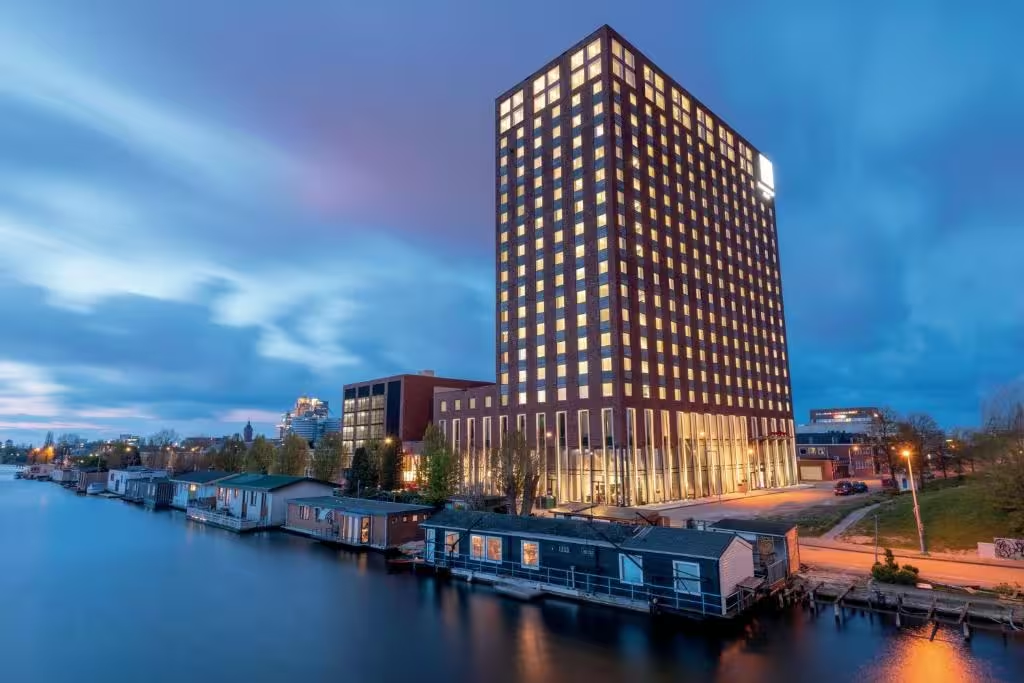
Air-conditioned rooms with desks, coffee makers, refrigerators, safety deposit boxes, flat-screen TVs, and private bathrooms with showers are available to hotel guests. Each room at the Leonardo Royal Hotel Amsterdam provides towels and bed linens. The hotel offers a continental, buffet, or American-style breakfast.

By Metro, it takes 18 minutes to get from Overamstel to Amsterdam Centraal, and it takes 30 minutes to get to Amsterdam Airport Schiphol, requiring a change at Amsterdam Zuid or Centraal station. This is quite practical and makes it simple to tour Amsterdam. The cost of accommodation in Amsterdam is roughly three to four times more expensive near the Centraal Station than it is in one of the surrounding districts. Given the abundance of public transportation, it is worthwhile to choose hotels that offer both convenience and quick access to transportation.
Ryan made the hotel reservation, and much like our last vacation to Girona, the quality was excellent.
GENDEC EU –
Gendec.EU (originally Gendec.NL) was developed by CloudAviation to reduce the extra work that comes with administration for pilots in general aviation. You can draft and send a General Declaration (GenDec) to the Dutch Border Force (Koninklijke Marechaussee) using this website.
Information is saved for later use, making submission simple. This generates a PDF that you may email to the handling agent for their records and to facilitate access to and from your aircraft through the Dutch border. In addition, once your flight is modified or cancelled, there is no requirement to update or withdraw the filed GenDec. Because of a deal with the Dutch Border Police, just postponing or cancelling your flight plan will notify border police.
Weather Forecast –
The overall forecast for Amsterdam was for a warm front linked to a secondary low over Scotland that was a component of a deep low-pressure system 955 hPa over Iceland that was colliding with a high-pressure system located over the Iberian peninsula. Conditions were expected to worsen between 1400 and 1600, going from VFR to IFR, with a LIFR forecast for sunset and later.
The prediction predicted light precipitation, clouds broken at 600 feet, visibility at 6000 meters, clouds overcast at 400 feet, and the potential of mist and overcast at 200 feet. Later on, visibility was expected to slightly increase until stronger winds arrived. I had to have numerous plans for backups because this was a flight to a known airfield with IFR conditions. Rotterdam would be the first diversion; if this was not feasible, a return to the UK and a diversion to Southend would be the second option. I planned this flight with full fuel for the return trip sector, enabling a more lengthy diversion if needed.

TAF EGSS 251102Z 2512/2618 21012KT 5000 -DZ BKN004 BECMG 2512/2515 9999 NSW SCT012 TEMPO 2515/2517 8000 BKN008 BECMG 2517/2520 BKN007 TEMPO 2521/2602 3000 RA BR BKN003 BECMG 2603/2606 27014KT FEW030 TEMPO 2604/2606 27023G38KT 6000 SHRA=
TAF for London, Amsterdam, Rotterdam & Southend on 25th of January 2024
TAF EHAM 251121Z 2512/2618 18006KT CAVOK BECMG 2514/2516 6000 -DZ BKN006 BECMG 2516/2519 3500 OVC004 PROB30 2516/2524 2000 DZ BR OVC002 BECMG 2523/2602 21014KT OVC006 BECMG 2603/2606 21020G30KT 6000 -RA BECMG 2608/2610 30023G35KT 9999 NSW FEW030 TEMPO 2608/2610 29025G40KT 4000 RA SHRA BKN005 SCT015CB BECMG 2615/2618 29012KT=
TAF EHRD 251121Z 2512/2618 18006KT CAVOK BECMG 2513/2517 6000 -DZ BKN006 BECMG 2515/2518 3500 OVC004 PROB30 2515/2524 2000 DZ BR OVC002 BECMG 2523/2602 21014KT OVC006 BECMG 2603/2606 21020G30KT 6000 -RA BECMG 2608/2610 30023G35KT 9999 NSW FEW030 TEMPO 2608/2610 29025G40KT 4000 RA SHRA BKN005 SCT015CB BECMG 2615/2618 29012KT=
TAF EGMC 251357Z 2515/2523 21009KT 9999 SCT015 TEMPO 2515/2523 8000 BKN010 PROB40 TEMPO 2518/2523 4000 -RADZ BKN006 PROB30 TEMPO 2521/2523 22015G25KT=
Flight to Amsterdam –
While travelling to the airport, I kept a close eye on the weather conditions in the Netherlands and here in the UK due to the impending warm front. Such flights carry a particular danger because of a single pilot and the possibility of icing conditions. The likelihood of icing is relatively high in January, and frontal systems frequently reach the high flight altitudes where airliners operate. Settled conditions are uncommon but not impossible.
While the risks of icing in high-altitude flying remain constant throughout the year, they are significantly higher in the winter. Flying en route sections in IMC carries the risk of ice build-up, but modern training and tools enable you to navigate the skies safely, if not cancelling the flight—which is more likely to occur during the winter.

Before an in-flight briefing, it’s a good idea to give yourself plenty of time to check the charts and assess the expected approach, as instrument approaches in instrument conditions require some planning and preparation. A self-discussion or briefing on flying in CAT 1 conditions and going over the potential missed approach procedures should also be part of your pre-flight.
After the aircraft was completely refuelled and ready, we obtained clearance for our airways join and taxied to Runway 21L where we conducted our departure briefing and got ready for our flight to Amsterdam Schiphol. Taking a series of left turns to establish on the radial towards BRAIN from the LAM VOR, we started our take-off roll and climbed to 2400 feet. We proceeded to London Control, who nearly immediately elevated us to FL090 for the journey. In about four minutes, we were in controlled airspace, flying in the direction of REDFA to get ready for our final destination of Amsterdam.
With a flight duration of just under 1 hour and 30 minutes, we’d probably need to get ahead of ourselves for a briefing before reviewing the METARS for Amsterdam, which had just begun to deteriorate. With a 20-knot tailwind, this would be my shortest crossing to the Netherlands, but with Amsterdam being a highly busy airport, I’d expect long vectors to increase the flight time.
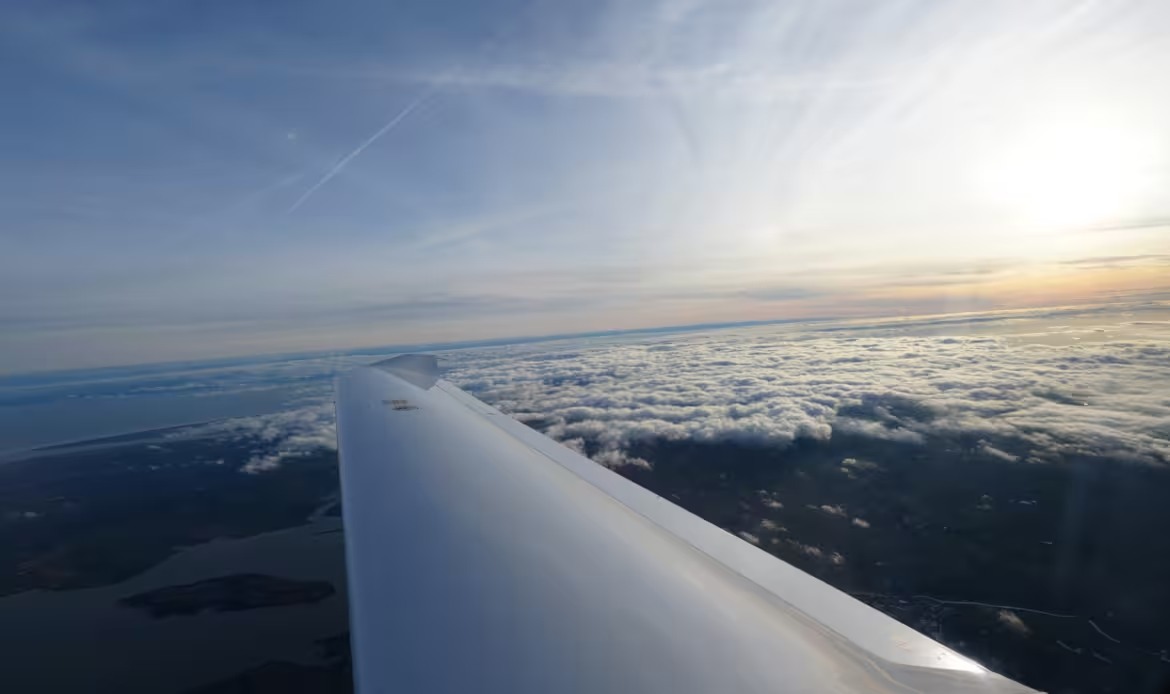
I was aiming for FL110 because the winds would be a little stronger, but after considering the high altitude clouds, the lack of oxygen carried on this sector, the approaching warm front appearing ominously above our current ceiling, and the high ice risk at this OAT, I decided to stay at FL90. Based on reports and the AIP, as well as the prevailing wind conditions, we determined that runway 22 was our most likely option, therefore we briefed for the ILS with a DA of 236′. While it would have been wonderful to perform the LPV, the associated DA was 503′, which was more likely to cause a go-around.
There were two options: use the LPV to runway 18C, which would reduce us to 201′, or use the ILS at 188′, which would require the weather to be significantly worse than forecast, after briefing for Runway 22, we discussed the possible options to consider before diverting to Rotterdam or back to the UK and Southend. During bad weather, it’s probably best to consider further afield possibilities, in this example to Paris or mainland Europe, where conditions were a little better.
This would be a huge sorrow to have to divert, but safety comes first, and other aircraft would also be diverted, except airliners capable of CAT2/CAT3 approaches and autoland.
METAR EHAM 251455Z 17009KT 9000 FEW009 BKN011 08/07 Q1025 BECMG 7000 BKN008=
METARS received for Amsterdam on 25th of January 2024
METAR EHAM 251455Z 17009KT 9000 FEW009 BKN011 08/07 Q1025 BECMG 7000 BKN008=
METAR EHAM 251525Z 17009KT 6000 -DZRA FEW007 BKN009 08/07 Q1025 NOSIG=
METAR EHAM 251625Z 17009KT 2800 -DZ FEW002 BKN003 OVC004 08/08 Q1024 NOSIG=
Conditions were deteriorating with the approaching front, which was currently located west of Amsterdam on the weather radar and indicated on the 12z FAX chart above. We received the runway for Amsterdam as planned after the briefing, and we would review it later during the trip.
After around 50 minutes in the air and having just passed the FIR boundary, the sun began to set, complicating matters slightly. Hard IFR at sunset is a whole new aspect of flying for me because it is not something you do in training and it is frequently not planned to arrive at that time, but work and life commitments can get in the way, and the weather can occasionally ruin your plans.
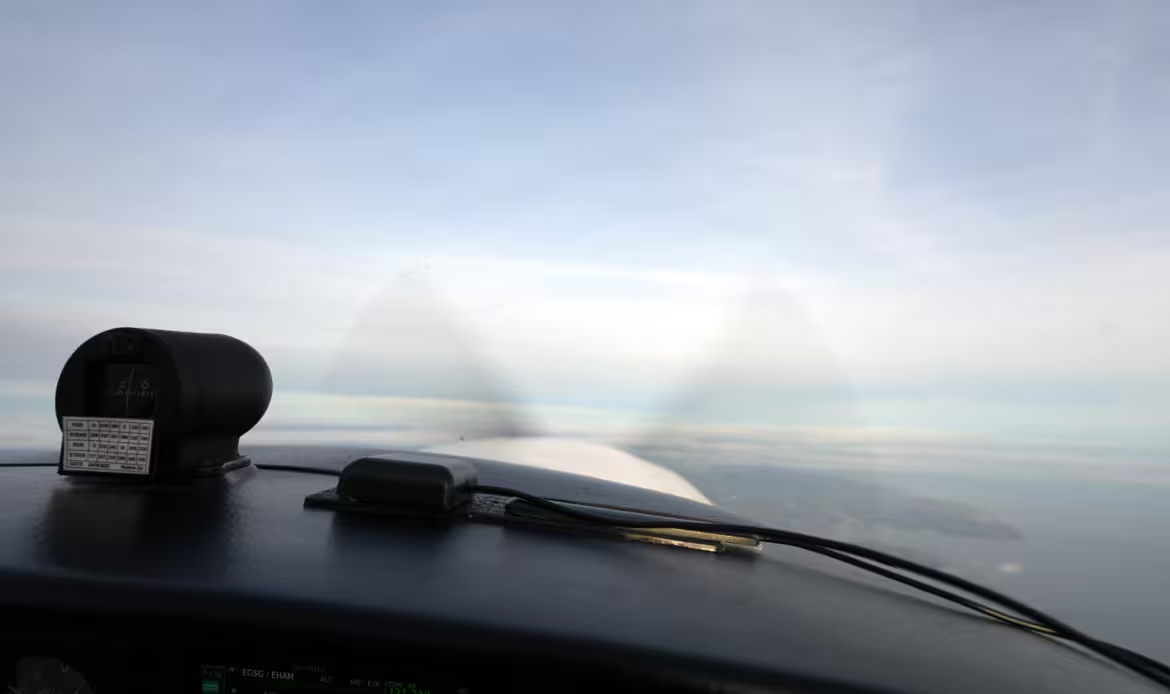
The worst weather I’ve had was in Prague a few years ago, and it was heavily frontal until we broke out while establishing on the ILS, with the occasional overcast layer we descended through on the way back into Stapleford, but this was by far the worst I’ve ever flown into, with both forecast and actual weather deteriorating.
This was a rather pleasant flight, with really smooth flying conditions as we headed east towards Amsterdam. With layers above us and the weather below us gradually thickening up, the views of boats traversing the North Sea disappearing with every mile we travel, and the setting sun to our right shoulder, it became clear that we would be descending into the murk below us.

Amsterdam tends to descend aircraft very early, so I expected to be sitting in the weather for a while, mentally prepared for the long approach that one can usually expect here, but nothing can mentally prepare you for hurtling towards the ground at 500 feet per minute down the instrument approach in total blindness.
The beauty of the contrails in the setting sky above before we began our descent, and it didn’t take long with TOPS at FL70 in less than 5 minutes from VMC conditions, we were entering the soup and heading for an almost certain landing with the weather minimums the lowest I’ve ever flown in. As soon as we approached the TOPS of the front, we were buffeted around a bit, so I chose to reduce the power level and let the aircraft settle. This immediately settled, and the majority of the moisture that had hit the aircraft had turned to ice, but we knew the temperature on our descent was higher.
We were cleared to 4000ft before lowering to 3000ft, with numerous vectors sending us over the 18R approach path before dropping to 2000ft after we were clear of the approach path. We initially expected to be granted a base leg, however additional aircraft flew ahead of us and continued calling up on frequency. It appeared that many aircraft were scheduled to arrive before the weather did.
This was tense because, during the 37 minutes between descent and landing, the ATIS code, and hence the cloud base and visibility, changed three or four times. The turbulence wasn’t too bad, but we recognised pretty soon that the bulk of the warm front would be on approach. As we were vectored downwind, we broke out in many layers before settling back into it as we flew away from the front.

It was now our time to prepare for the ILS Runway 22. I’d ensure everything was in working order, and even though we were about 20 nautical miles out, we wouldn’t be on the glide path until 6 miles out, so the wait was agonising, and the pressure was on my shoulders because the journey was just a few minutes further.
It’s incredible how rapidly you are hurtling down the glide path. Normally, I come in fast till 4NM, but because this was my first full-blown IMC down to minima (in training, you fly to minima using the hood device), I decided to take it gently and ensure that the aircraft was stable and the autopilot was working properly. While I could have flown the approach manually, it was more safer to use the autopilot and have the extra capacity to watch the situation.

Interestingly, the turbulence was significantly greater than I expected, especially when we began to break free, but it made sense given the frontal weather. ATC advised us that we would come across approach lights at approximately 400ft when we approached the decision height of 240ft (236′ DA on the plate). The rain could be heard on the canopy as we got closer to the airport, and it was probably the most intense I’d ever felt in a light aircraft, but it was quite exhilarating.
As we approached 400ft, we could just make out the ground, but we weren’t visual until a few seconds later, when we passed 350ft, when I disconnected the autopilot and continued towards the runway as it became visible, and what a relief it was to make one of the best landings I’d made in a long time, and the first of 2024, in true style.
While I briefly deviated from the glide path in the final several hundred feet as the approach and runway lights dazzled in the rain, landing out onto the touch-down zone for the rollout was no simple task. My next task in the pretty heavy drizzle was to locate the departing point, but doing so without consulting the overlay charts on the iPad proved challenging.
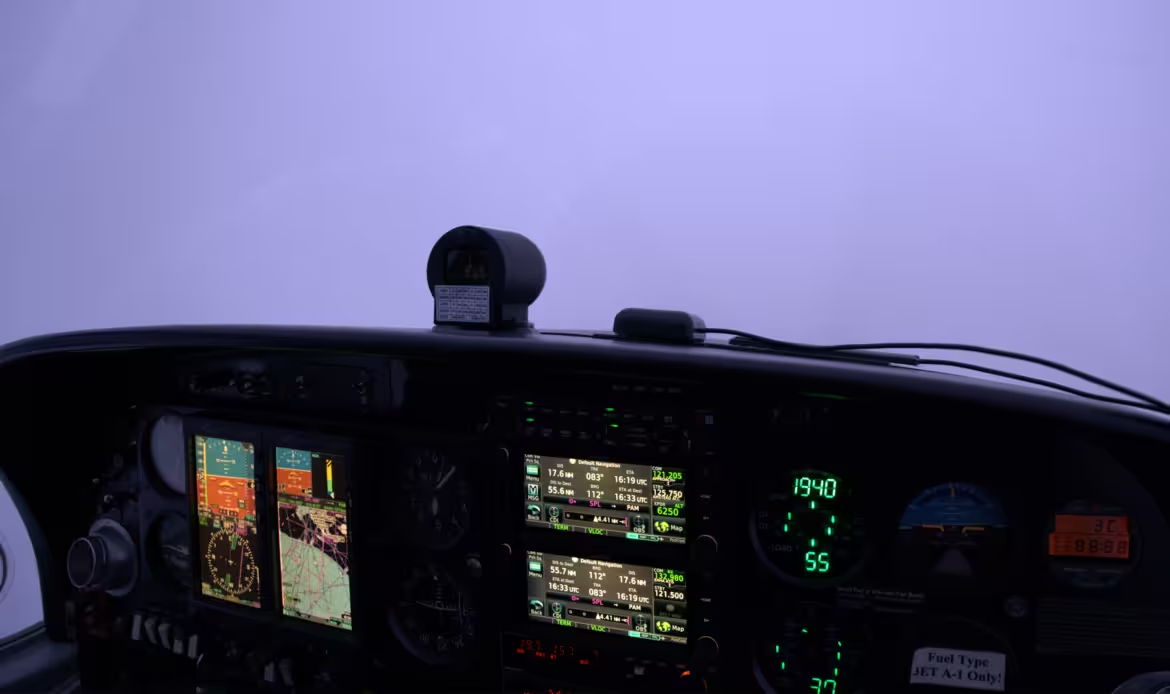
I couldn’t see the runway lights, and there probably weren’t any, but I did see the exit because we were almost there, we managed to slow down fairly quickly, almost forgetting that a wet runway would be slippery with harsh braking, and with a slight but very unfortunate squeak of the wheels, we vacated via G3 and contacted the ground frequency.
I literally couldn’t see the lights leading to the taxiway; most likely there weren’t any, but we eventually saw the exit. We managed to slow down fairly quickly, almost forgetting that a wet runway would be slippery with harsh braking, and with a slight but very unfortunate squeak of the wheels, we vacated via G3 and contacted the ground frequency.
As we vacated, we heard ATC inform another aircraft that it was in low visibility procedures and couldn’t see the aircraft in question, which was extremely precise timing.
We parked not far from Hangar 3, so I was curious about our location given the heavy winds predicted for tomorrow. We would secure the aircraft as much as possible and notify the handler to return since we would need a few minutes for shutdown and another 5-10 minutes to remove our baggage and ready the aircraft for tomorrow’s storm.
We shut down the engine and told Avia of our plans; while we couldn’t hear them properly, I believe they understood and returned only a few minutes later, which was extremely helpful. We took a short minibus ride to the GA terminal, where our passports were verified and stamped before continuing on to Amsterdam for food and beer.
ATC Flight plan and route flown –
N0126F110 BRAIN P44 CLN L620 REDFA REDFA1A
Filed ATC flight plan for EGSG-EHAM

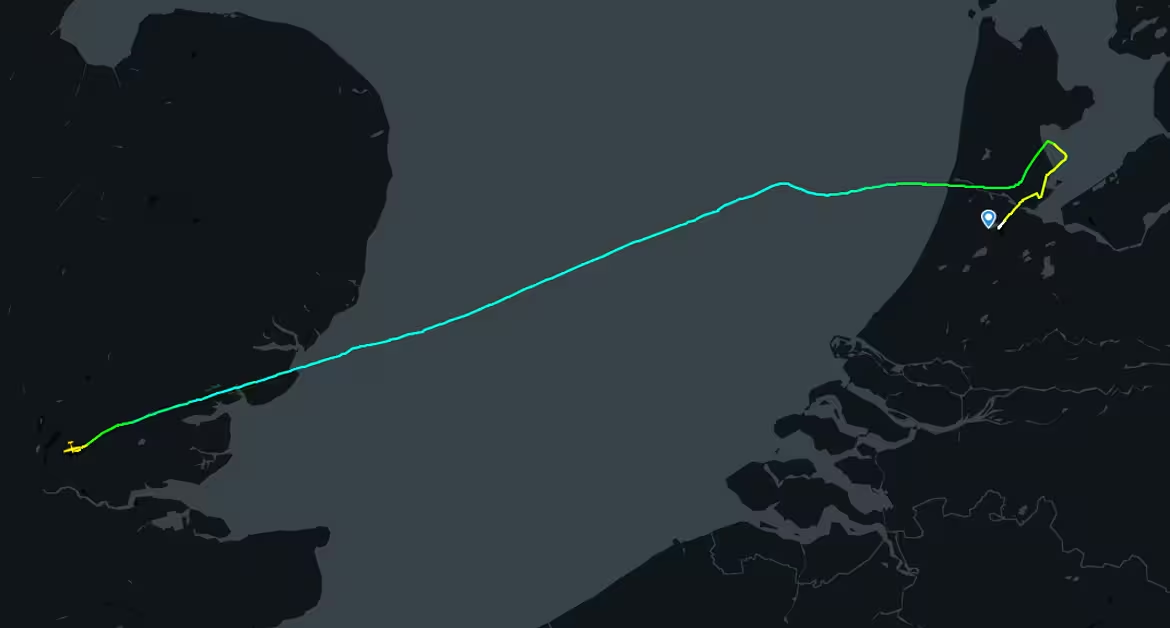
Stay in Amsterdam –
We agreed that public transit would be the best method to get to and about Amsterdam but to save time, we would take a taxi from the General Aviation Terminal to Schiphol and then use the Metro system to get to our hotel. Normally, I find it easy to navigate Schiphol, but being dropped off at the taxi stop and trying to find the train station was entertaining; then, the typical entrance was under renovation, so finding the right platform was challenging.
We would take the intercity and then transfer to the metro to Overamstel, where our hotel was located. We were now more exposed, and we realised how much heavier the rain was from the passing warm front, but it was a huge relief to have made it into Schiphol because the airport was now in low visibility operations, with the air traffic control tower shrouded in rain and visibility fairly poor; we truly did make perfect timing.
The walk from the station to the hotel was only a few minutes – the journey was 26 minutes, with a brief stop at Amsterdam Zuid on the way to the Leonardo Hotel, which is great. We checked into the hotel, which was rather lovely and luxurious, and the modern quality stood out in comparison to other hotels I’ve stayed at in Amsterdam.
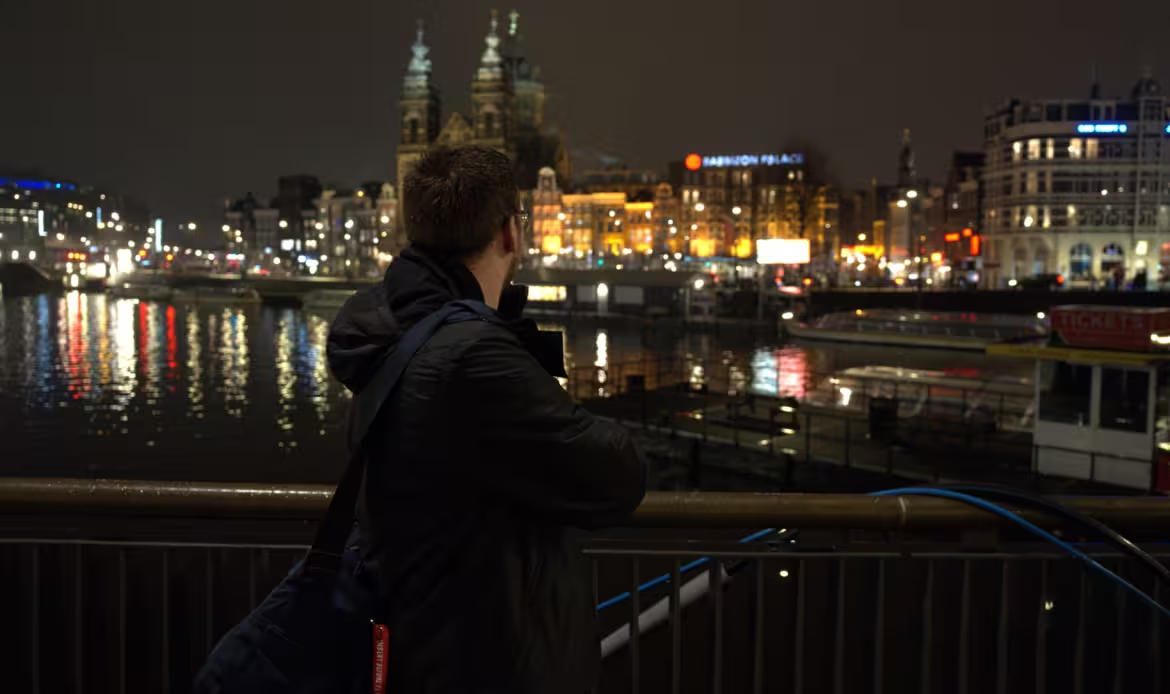
It was time to fly to Amsterdam for dinner, and we both wanted Asian food but not a buffet. We both wanted to go to a Thai restaurant, and the only respectable one we could find was about to close. When we arrived in Amsterdam, we took a short walk down the canals to the restaurant we had spotted on Google Maps.
We found Tasty Asia, but it looked closed. This quaint restaurant is near the famous Rembrandt Square. The staff were very welcoming even though it was about to close in 30 minutes – and we apologised profusely – but despite having to close, they still treated us with respect and dignity, and you could tell that this was a family-run establishment, so we were confident that whatever the cost of the food, which was of good quality and taste, would be worthwhile.
Although I truly want to explore local cuisines, they are tough to find unless you know what you’re searching for, except pancakes, which are often found alongside classic European foods. I first went in 2013 for the UEFA Europa League Final, and not far from Damn Square was a lovely Dutch restaurant that provided roasted chicken with boiled veggies, a traditional Dutch meal, and plenty of beer. I can’t find this restaurant anymore, that is a shame because I’d love to return and rank it higher than any other place I’ve been.
When I visit Amsterdam, I usually go to one of the many steakhouses that line the back streets of the Canals or at the far end of De Wallen (Red Light District), and it’s always a good meal. We had several good beers with our dinner, but we wanted more before bed, so we walked to Cafe Old Wembley, which I hadn’t been to in about 7 years and wanted to sit here and have another beer. There are numerous spots in Amsterdam that I have visited and would like to return to.
A pint or two here before returning to our hotel, and be careful since, like in most major cities, transportation slows down and you must be careful not to miss the last train, which we nearly did. Unfortunately, the hotel bar was closed, but we could buy a drink from the fridge, and the hotel receptionist offered us a glass to commemorate our incredible arrival in Amsterdam earlier this evening.

After a wonderful night’s sleep and a lie-in, we got up and prepared to tour Amsterdam, but the weather was damp and windy, as predicted. We decided to go to my fave post-hangover spot, Pancakes Amsterdam AAN’TIJ. This site, which opened in May 2018, offers the most stunning view of Amsterdam and is ideally positioned near the ferry to Amsterdam North.
I would recommend this location because it is away from the tourist traps and is a hidden treasure on the riverfront, away from the rush and bustle of the area near Central Station. You must sample the famous Dutch pancakes and the accompanying refreshing drinks.
There are numerous things to do in Amsterdam, but one that I recommend is going along the canals, the Red Light District, and the museums linked with it. There’s lots to do in Amsterdam. The best website for finding things to do before you go iamsterdam. The Heineken Experience was somewhere I hadn’t been in a long time, and since Ryan was visiting for the first time, it seemed like the ideal tourist activity.

This is about a one-hour walk from the central station, and if the weather is nice, you can combine it with a walk along the canals.
After a few hours at the Heineken tour, braving its rooftop bar where you would get one free cocktail (made with Heineken), and reflecting on what has so far been a great journey, I finally flew to Amsterdam. By this point, all of those beers had made us hungry, so I suggested to Ryan that we walk to De Hallen, which I had discovered during my previous visit to Amsterdam. De Hallen is a fashionable, industrial-chic shopping mall that includes stores, a food hall, pubs, and a movie theatre.
After we decided what we wanted to eat, we planned our route back to Centraal station, where we chose a McDonald’s McFlurry, because why not? It’s chilly outdoors, so we might as well join it and return by the canals, which provide a completely different perspective at night with all the lights. It was becoming late, and we wanted to get back sufficiently early for decent sleep, to eat breakfast before our journey back to the UK the next day.

The weather forecast was excellent compared to the previous 24 hours, so we didn’t have to worry too much this time. I planned to video film the facility at the General Aviation Terminal, which was permitted by the Avia VIP FBO manager. This meant that after breakfast, we would proceed to the facility for our departure. Breakfast in our hotel was excellent; it was buffet style with an omelette station and was aimed towards the international flight crews who slept here, but it was not worth £50 in total for two.
This was a very short trip, and staying longer would not have made a significant difference in cost because parking the aircraft is reasonably inexpensive, as it is at most large international airports, except Zurich, where parking requires an American Express. We would travel to Amsterdam Zuid, change for the intercity to the airport terminal, and then repeat the same as on the outbound trip.
This was an adventure of mixed emotions, a fast visit but a timely reminder to pinch myself that I had flown into one of the world’s biggest airports, which is quite an accomplishment. A quick walk of the terminal to discover some souvenirs, particularly the aviation shop, which is still open and sells replicas of KLM aircraft and other well-known airlines.
We booked a taxi to the GA terminal to film the interior and take a tour led by Sam Reukers before our eventual departure.
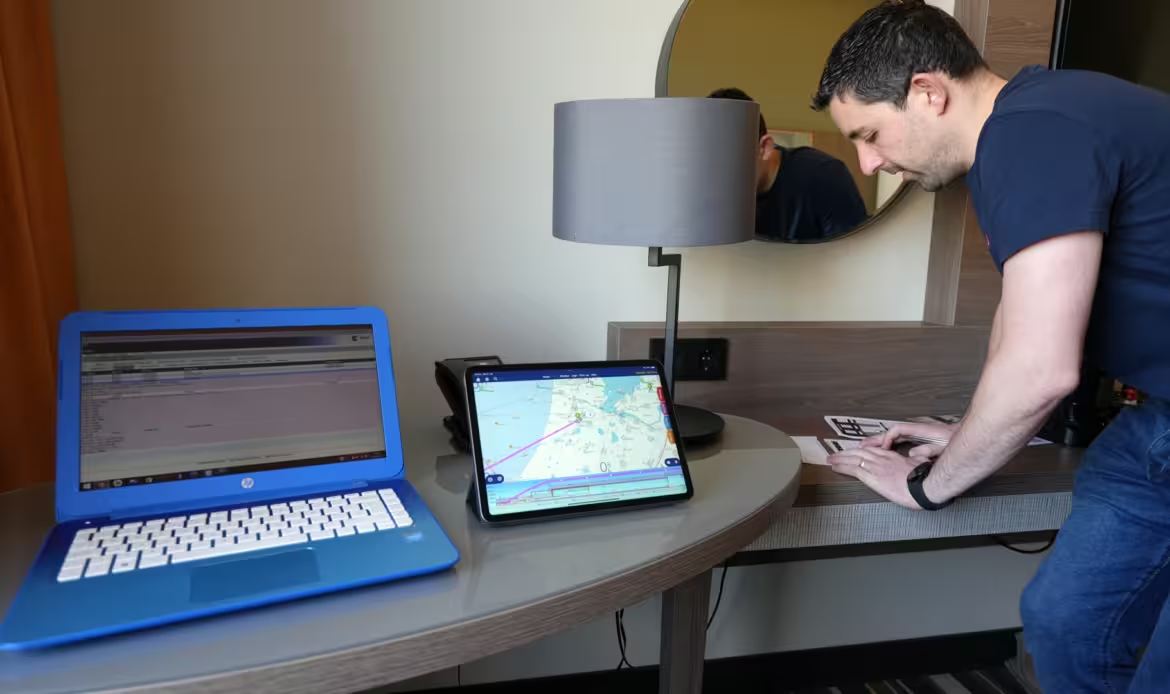
Avia VIP
The FBO facility by Avia VIP features both a passenger lounge and a crew room. In most circumstances, we would not need to utilise this because we had completed the majority of our flight planning well before the flight, but it is an excellent example of a dedicated facility. If you flew with family and needed some private time to arrange for the flight beforehand, this would be the ideal area, with a dedicated crew room away from the passenger lounge.
Phone +31 2 020 66 780
Details for Amsterdam FBO by Avia VIP
Fax +31 2 020 66 790
eham@aviavip.com
VHF 131.605 MHz
Opening Hours 07.00 – 23.00 LT (24/7 availability)
What’s advantageous is that security and customs are dedicated to general aviation before the ramp in the GAT, allowing for a speedy check-in before departure. We didn’t fuel up because we had enough petrol to return to the sector, but I’m sure this would be straightforward in Amsterdam.
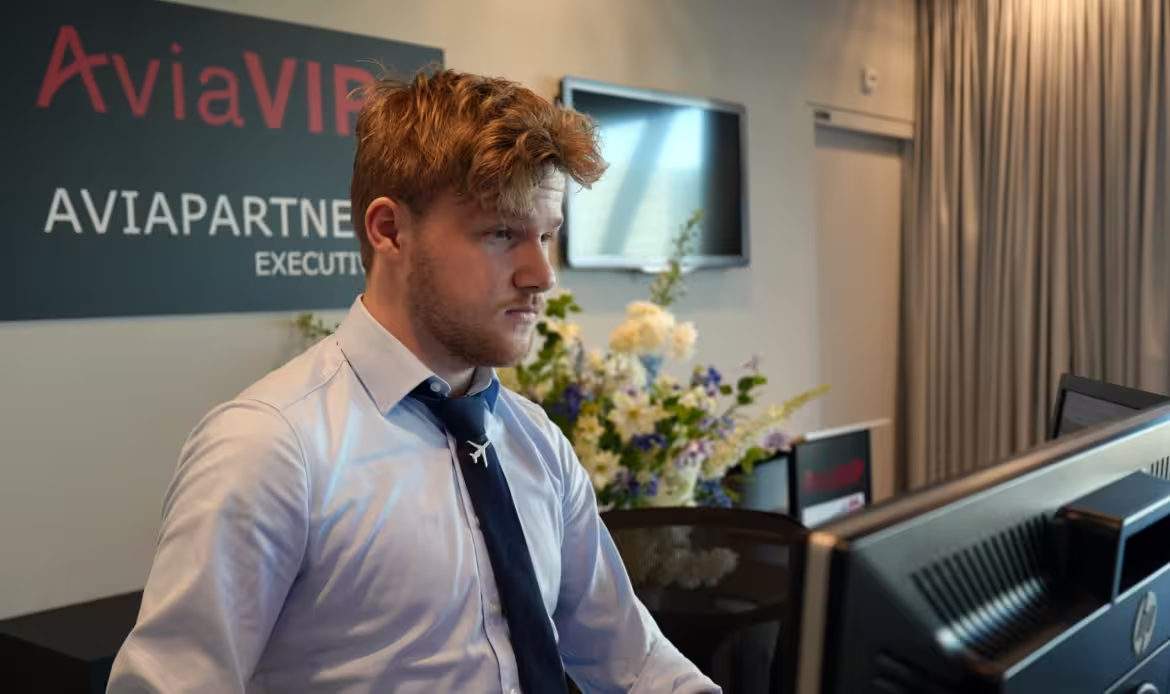
Sam’s tour of the facility was well welcomed, which you can see in the return vlog.
Weather Forecast –
It was winter, yet the FAX chart for our flight showed high pressure over mainland Europe and a slack flow of air across the UK and the Netherlands, with bright skies or few clouds. This was anticipated to be an easier section home than the sector to Amsterdam.
It made a difference because every flight I had planned since my trip to Slovakia and Erlangen had been hampered by terrible weather forecasts.
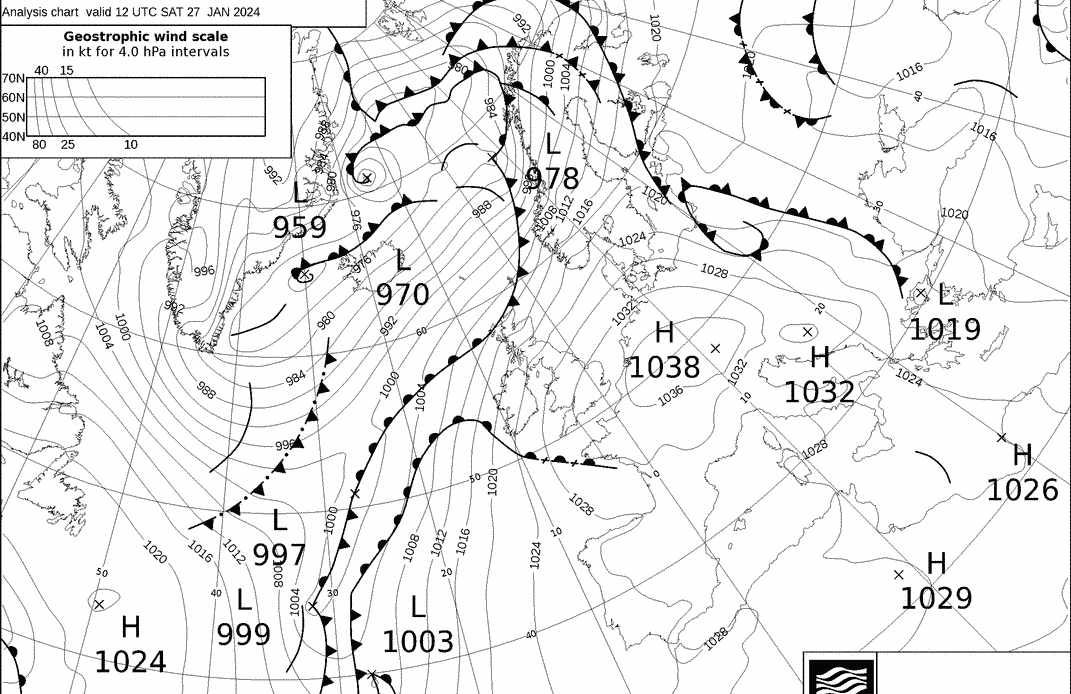
TAF for Amsterdam and London on 27th of January 2024
TAF EHAM 271056Z 2712/2818 23010KT CAVOK BECMG 2715/2718 17005KT BECMG 2810/2813 15012KT=
TAF EGSS 271056Z 2712/2818 19007KT 9999 FEW030=
Return Flight VLOG –
Flight to the UK –
After clearing customs and getting our passports stamped, we boarded the Avia VIP minibus to the aircraft, which was parked on K76. Although we had tied the aircraft down due to the expected strong winds yesterday, the chocks had been moved significantly by the wind. We had lost the stall warner cover, which the very helpful handler checked to see if he could find it by the fence, but airside operations would have picked up most FOD and were unlikely to be found.
We had a SLOT of 1130UTC (1230 local), and we received the Departure Sheet from AviaVIP. This was not trivial; it outlined the procedure in detail, and while this may appear off-putting, an airport that functions efficiently, such as Schiphol, must have such procedures in place due to the airport’s complex taxiways and SLOT systems.
The only significant difficulty was having to obtain clearance 25 minutes before off blocks, which is usually 15 minutes in most other airports, but I would do that while finishing pre-flight preparations. I’ve posted a copy here, but if there are any updates, you should acquire the latest version (if there is one) from AviaVIP.
While we were granted ATC clearance to the UK, we anticipated that there might be some modifications, so while I chose to brief the departure procedure, we knew we would most likely receive an amendment due to our speed and size. We began the aircraft a few minutes late because it was really cold, and we switched to a double glow before starting to verify that the engine turned over. It was a near call, and we almost immediately requested a ground power unit to ensure that the battery did not go flat.

We were able to taxi a few minutes later than scheduled to GD, where we would join G and taxi to holding point G1 for Runway 22, where we had landed more than 36 hours earlier. However, the weather was clear for the short flight back to the UK, the majority of which was over water. While usual practice mandates that you switch to Departure as soon as you receive take-off clearance, because of our slow speed and traffic levels, the tower would keep us on frequency to monitor for any potential deviations. Schiphol ATC is exceptional, as it has a system in place for everything.
We were lined up by the tower, who informed us that we would remain on frequency while a few other aircraft had been authorised for takeoff. We were then given our departure alternate, which would be 210 after departure and climbing to 6000 feet. A little time later, we were cleared to take off, followed by two more aircraft waiting on the other runways. It was a genuinely breathtaking moment, but we would be extremely busy.
Once we passed 600 feet, I was focused on IFR flying and ensuring that I was maintaining that heading; this was a compromise between actively flying the aircraft IFR while also keeping a good eye out for other aircraft. What didn’t come to mind was birds, and in this instance, a flock of geese appeared at our level rather fast.
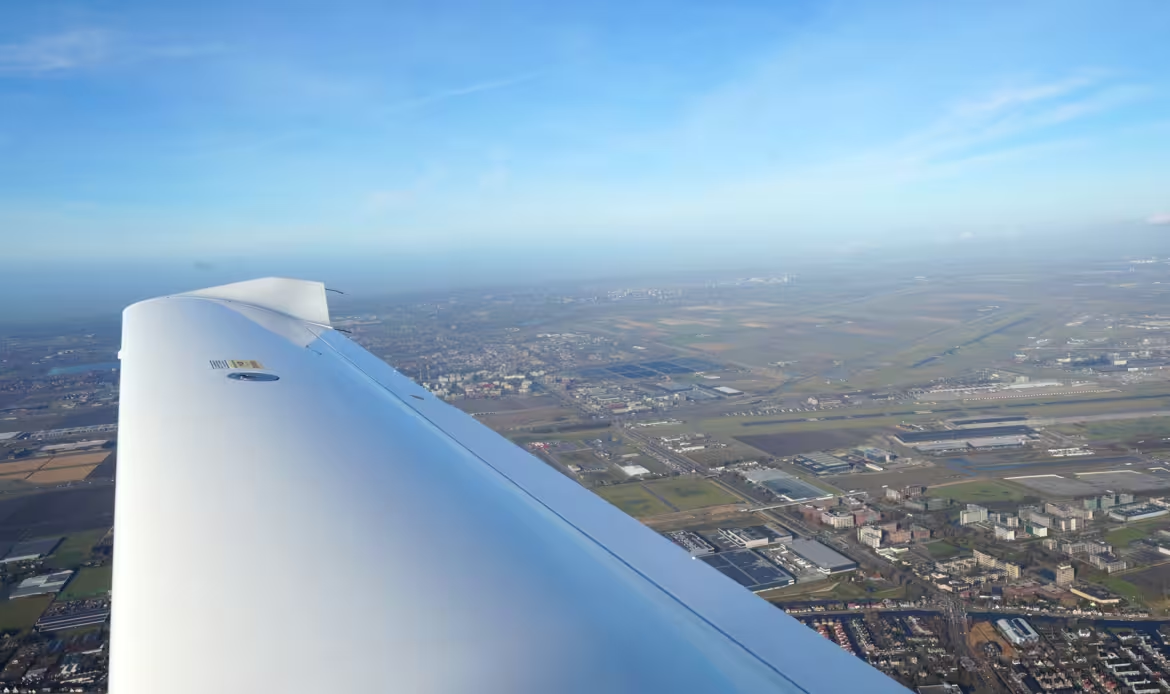
Ryan called it out to me and luckily shifted the stick slightly to the right for me since I was deep in focus with flying under instruments and we were extremely close to colliding with geese, maybe a few feet apart. A brief Google search reveals that Schiphol Airport, the Netherlands’ main airport, has had its share of problems with geese for many years. Because of the extent of the geese population, there is a significant risk of a bird strike here.
ATC must have misheard my message, but they checked the runway after our departure and discovered no birds had damaged our aircraft, so we continued and received a gradual climb, initially to FL60, where we were kept for almost 5 minutes before I requested a higher climb to FL100. This is a very congested area of airspace for incoming flights from Western Europe and the United States.
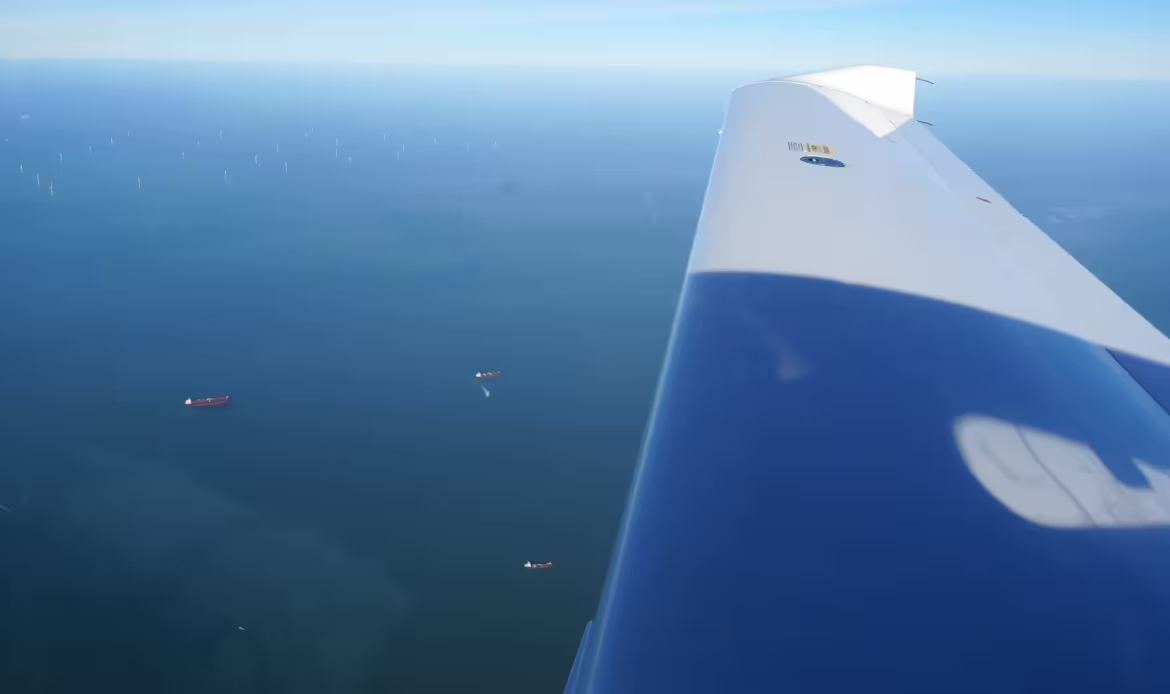
30 minutes after takeoff, we had reached our final cruising level of FL100, with a 23-knot headwind returning to the UK and good flying conditions for the time being. There was some cloud above, but we could easily climb above it if we had oxygen onboard, below was nothing but the North Sea, and for miles, we would marvel that we had just flown out of one of the world’s busiest airports in a small aircraft.
The weather above was thickening up, most likely because of the frontal system to the west in the Atlantic colliding with this high-pressure system. We started getting a lot of clear air turbulence, shortly before descent, but we weren’t far from the base of the cloud cover above, so I expected some turbulence like you do at the top or bottom of a cloud layer. Fortunately, we began our descent as this was starting to move us around quite a deal.

It was fantastic to finally be able to do a proper IFR trip in the winter, which I had previously thought was impossible. But the day was far from over, and with the sun beginning to shine through the lower levels of the atmosphere, we would have a very hazy arrival into London, so I chose to slow our descent rate to ensure we remained inside controlled airspace for as long as possible; this was intentional, and ATC didn’t seem to mind.
We were offered a direct route to Southend before turning towards Lambourne VOR and eventually arriving at Stapleford. Marvellous, a nice time to return to the UK, with a thin layer of scattered clouds to pass through as we joined the Stapleford circuit via the overhead. It was busy with pilots performing circuit training because the weather is generally unpredictable, and today was a good day with few winds.
My habit of flaring too early haunted me as we landed in Stapleford at half past one, just 1 hour and 45 minutes after departing from Schiphol. After a brief taxi ride back to the normal parking spot, the first journey of 2024 had been completed.
ATC Flight plan and route flown –
N0125F100 DENAG6X IDRID L980 LAM/N0116F100
Filed ATC flight plan for EHAM-EGSG


Outcome & Costs –
After a few years of trying, the goal of including Amsterdam Schiphol in the logbook was eventually achieved. It was much easier completing this IFR, and while the weather issues were among the most severe I’ve experienced since receiving the IR, this trip would not have been possible without it – the weather conditions were some of the worst I’ve ever flown in an aeroplane, let alone a light aircraft.
Amsterdam is a fantastic city, and Schiphol is easy to get to, but it may be expensive, both to visit Schiphol and to stay in Amsterdam, but if you have and want to do it, it’s a terrific idea and well worth it despite the costs. Furthermore, Schiphol is difficult, and some pilots will be intimidated by the knowledge required to fly here; nonetheless, this is a barrier that can be readily surmounted, which is why I did it.
Amsterdam Airport Costs –
The final bill was split into the following;
Avia VIP FBO Fees
- Basic handling €130
- Admin fees Airport Fees €22.15
- Admin fees Crew Transfer €5.55
- Crew Transfer (Terminal) €37
Sub-Total: €194.70
Amsterdam Schiphol Fees
- Airport Fees €147.69
Sub-Total: €169.20
Jet A1 Uplift: None uplifted
Total Costs Amsterdam: EUR €409.19 incl VAT (£349.84)
Amsterdam Costs –
Food, Drink & Leisure Costs: £143.68 each (Food/Taxi’s split amongst us)
Accommodation Costs: £240 for 2 nights.
€50 for breakfast then for us both.
Total Accommodation Costs: £281
Travel Costs: £16.00 each (Est) – EUR 18.56
Sub-Total: £440.68
Flying Costs –
Aircraft Charges: £700.90 (@ £183 per hour (3 hours 55 minutes flown))
Airport Fees: £349.84 (As above)
Oxygen Refill – None for this trip
Eurocontrol Payment – £18.00 (Arrived in March)
JetA1: No Uplift in AMS/EHAM
Total Cost –
Total Costs (Non-Aviation): £440.68
Total Costs (Aviation): £1050.74
Total Costs (All): £1491.42
Version 1.0 – Last Updated 13/10/2024
Aircraft –
The aircraft is a DA40 TDI, which uses a Thielert “Centurion” 135 hp (101 kW) diesel engine and burns diesel or jet fuel. It has a constant-speed propeller and FADEC (single lever) engine control. G-ZANY is based at Stapleford Aerodrome, Essex, UK and was delivered as new in 2003.
Read more about the aircraft on the dedicated page

Supporting the YouTube Channel –
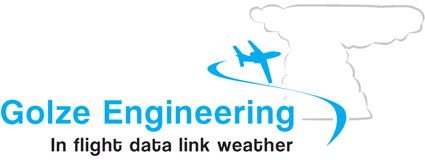
Support the YouTube Channel –
Welcome to The FLYING VLOG…
I am a current PPL(A), SEP (LAND), IR(A) SE/SP PBN, IR(R) & Night holder. Flying the world, exploring its hidden treasures. Taking pictures and vlogging the journey; I hope I can provide you with an oversight of my progression as I develop my skillset and airmanship in exclusive videos on my YouTube channel.
Now flying IFR in the Airways of Europe & beyond. Bringing you an exclusive niche to YouTube, flying in the same skies with commercial airliners.

